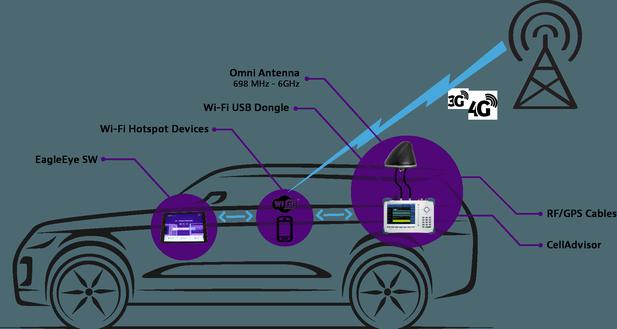TransFlash card
Function
SD card is a new generation of memory device based on semiconductor flash memory, due to its small size, fast data transmission speed, and Excellent features such as hot plugging are widely used in portable devices such as electronic dictionaries, mobile phones, digital cameras, and car navigation systems.
In the SD card 3.0 specification, the theoretical maximum capacity of the SD card can reach 2TB, and the theoretical maximum read and write speed can reach 104MB/s (in the latest 4.10 specification, the theoretical maximum read and write speed has been increased to 312MB/s), and the Micro SD card is the second smallest SD card in the SD type, with a size of 15mm*11mm*1mm. If these advantages of the SD card can be applied to automated test systems, such as storage diagnostic tests Information such as data, satellite payload data and missile flying payload data can provide a new feasible solution for data storage in the current automated test and control system. Alternative role.
Pins and functions
The main pins and functions are described as follows:
CLK: Clock signal , The controller may transmit a command bit or data bit in each clock cycle. In the default speed mode of the SD bus, the frequency can be changed from 0 to 25MHz. The bus manager of the SD card can freely generate 0 without any restrictions. ~25MHz frequency, in UHS-I speed mode, the clock frequency can reach up to 208M.
CMD: Command and response multiplexing pin, the command is sent by the controller to the SD card, which can be from the controller to a single SD card, or to the SD bus Load all cards; the response is the response of the memory card to the command sent by the controller, and the response can come from a single card or all cards.
DAT0~3: Data line, data can be transmitted from the card to the controller or from the controller to the card.
The pin definition of SD card is different from that of Micro SD (TF) card.
SD card: 1-data3,2-cmd,3-vss,4-vdd,5-clk,6-vss,7-data0,8-data1,9-data2.
TF card (SD mode): 1-data2,2-data3,3-cmd,4-vdd,5-clk,6-vss,7-data0,8-data1
TF card (SPI mode): 1-rsv,2-cs,3-di,4-vdd,5-sclk,6-vss,7-do,8-rsv
register and function description As follows:
OCR (Operating Conditions Register) register: The 32-bit operating conditions register mainly stores the VDD voltage range, and the SD card operating voltage range is 2~3.6V .
CID (Card IDentification Register) register: card identification code register, the length is 16 bytes, it stores the unique identification number of the SD card, which cannot be programmed by the card manufacturer Modify.
CSD (Card-Specific Data Register) register: The card characteristic data register contains the necessary configuration information when accessing the card data.
SCR (SD Card Configuration Register) register: SD card configuration register (SCR), provides some special features of SD card in this card, the length is 64 bits, The content of this register is set by the manufacturer in the production plant.
RCA (Relative Card Address) register: The card relative address register is a 16-bit writable address register, and the controller can select the SD card corresponding to the address by the address.
DSR (Driver Stage Register) register: driver stage register, is an optional register, used to configure the driver output of the card.
Interface Controller:
Mainly used to control and control the internal storage core Management, controls and settings by receiving commands sent by users, and responds according to the commands, and then performs operations such as reading and writing of data in response.
Internal storage medium:
Flash block for data memory storage.
Manufacturer Support
The format of this memory card is mainly supported by mobile phone manufacturers and was invented by SanDisk, and Motorola was the first company to use the Micro SD format. And China Taiwan International Avionics uses Micro SD built-in GPS map to cooperate with their GPS receiving equipment.
Since Micro SD is smaller and can be converted to Mini SD and ordinary SD cards, mainstream manufacturers almost all support Micro SD, and the slightly larger MiniSD is rarely used.
Main brands
Currently, there are many brands of Micro SD cards on the market, and well-known brands have their own characteristics.
SANDISK: The Micro SD card of the brand SANDISK is probably the most common on the market. A "blue card" like this is basically available in every digital specialty store. In fact, SANDISK's Micro SD cards are not all low-speed, there are also high-speed models (black cards), but it seems that they are not available in the local market.
Kingmax: As a manufacturer of branded memory, KINGMAX has been committed to the development of memory cards in recent years. It uses a unique integrated packaging technology (PIP), which makes it difficult for counterfeiters to imitate. The Kingmax SD card has a maximum transmission rate of 10MB/sec. It has a waterproof, shock-proof performance and a pressure-proof three-proof design. It can meet various requirements for shooting in the field. Request.
Panasonic: As the creator of the SD standard, Panasonic's technology can be said to be one of the best SD cards on the market. It’s just that most of the Panasonic SDs on the market do not have a warranty, so when you buy, you must ask the important question of the warranty period.
Kingston: As the world’s largest manufacturer of memory, Kingston produces SD cards without interface circuits. Therefore, among many flash memory products, it is the smallest (the size is only the size of a stamp). , The weight is less than two grams), which is why many digital cameras, MP3 and handheld computer products have chosen SD cards as their storage media. Only due to the product size, it is more difficult to increase the capacity of the SD card. In addition, Kingston's SD card products all provide up to 5 years of warranty time.
Device
The SD card adapter with Micro SD card inserted can be used in devices that support SD card; and this adapter has been included in the Micro SD box It is included to increase the compatibility of Micro SD card. SanDisk has made a list of support for some mobile phones, digital cameras, camcorders and music players that support the Micro SD card format.
Main application areas
Micro SD card is mainly used in mobile phones and is a must-have memory card for feature phones. 2GB is the standard capacity. Micro SD card 1GB was still the mainstream in 2011, and it was basically replaced by 2GB in 2012. The mainstream OEMs also stopped producing 8GB wafers, and only Powerchip is still supplying it. For manufacturers who need to bundle small-capacity Micro SD cards, they need to find a balance in price, capacity, and supply. When the price of Micro SD card capacity increases, the price is not much different, and manufacturers tend to bundle high-capacity memory cards above 2GB to increase customer operating space. , To stimulate consumers to buy; for end consumers, if the price is similar, it will be easier to accept high-volume products.
Since the rise of smart phones, the pattern of the mobile phone market has begun to change. In the first two years, smart phones were mainly positioned at high-end, and their market share in the mobile phone market was not high due to higher prices. However, in 2011, mobile phone manufacturers began to promote After smart phones, the market share of feature phones began to erode.
In terms of the storage capacity of smart phones, high-end smart phones promoted by international manufacturers such as Apple, Samsung, and HTC generally use 8GB/16GB eMMC+4Gb LPDDR II or more as memory, which is sufficient, but if External storage is needed, and the demand for capacity will be even greater, at least 4GB or more. Generally, smartphones with Android operating system at a price of 1,000 yuan or less mainly use 4Gb SLC+4Gb LPDDR I as the embedded storage, and 2GB storage capacity alone is not enough.

Usually installing a navigator on a mobile phone requires more than 1GB of capacity. If you add photos, music, videos, and 2 high-definition movies, 2GB of storage is far from enough, and a 720P High-definition movies already need to occupy more than 1GB of flash memory, and 2GB flash memory cards are also stretched as external storage for smart phones. Now mobile navigation is a standard application of smart phones. Obviously, for consumers who use smart phones, the built-in storage capacity can no longer meet the demand.
Flash memory card Micro SD card can just make up for the problem of insufficient capacity. If it is only equipped with a capacity of 2GB and below, it will not solve the problem of small storage capacity. Only a flash memory card with a higher capacity (4GB/8GB) In order to meet the demand, it is only natural for consumers to shift to high-capacity storage.
The capacity of the SD card in the camera can no longer meet the needs of consumers. Generally, a photo with 10 million pixels occupies about 4MB of space, and a 2GB memory card can only store 500 copies. It may be full in two days, so now consumers do not have the highest requirements for storage capacity, only higher.
In addition, Micro SD cards will also be used in low-priced tablet computers, MP3/MP4, e-books, navigators and other terminal devices, but these devices have relatively high or relatively narrow storage requirements. Basically, products with a capacity of less than 2GB will not be used, or it will not help much with the sales of 2GB products. Now tablets and MP4 need to be decoded in high definition, 1080P is already the standard decoding configuration, so 2GB storage capacity is far from enough.
Although 2GB capacity is about to be eliminated by the mainstream mobile storage market, this does not mean that 2GB will immediately have no market space for development. Some low-capacity flash memory cards may also replace current similar CDs and VCDs. Such non-environmentally friendly and easily damaged storage media may be embodied in the form of content cards such as system drives, games, music albums, and e-books. However, these markets are more price-sensitive and also depend on the original manufacturer's support for 2GB. However, in the end, the 2GB Micro SD card will gradually disappear.
Development trend
The SD card specification was proposed by the SD Association. The SD Association is composed of Panasonic, Toshiba, and SanDisk. Therefore, the United States and Japan have always been in the SD card technology. Lead. Micro SD card and standard SD card use the same specification. In the SD 3.0 specification proposed in 2009, the SD Association proposed the UHS-I (Ultra High Speed 1st Generation) speed standard. Under this speed standard, the SD card can support read and write speeds of up to 104MB/S. At the same time, it was proposed The new-generation standard SDXC card of the SD card has increased the maximum capacity of the SD card from 32GB to 2TB, enabling the SD card to meet the development needs of the big data era. In the 4.10 specification proposed in June 2013, the UHS-II speed standard was also proposed to increase the theoretical read and write speed of the SD card to 312MB/S, so that the SD card can meet the requirements of high-speed data transmission. It has broad application prospects in future development
The famous American memory card manufacturer Lexar has produced an SD card with a capacity of up to 256G and a read and write speed of 60MB/s. And the ultra-fast SD card produced by SanDisk Corporation supporting SD3.0 specification can reach a read speed of 95MB/s and a write speed of 90MB/s. At the same time, it also produces corresponding high-speed card readers, and in 2014 In May of 2005, it launched the supreme ultra-fast SD card that supports the SD4.0 specification. The reading speed can reach an astonishing 280MB/s, and the writing speed has also reached 250MB/s. In the PC interface, USB2.0 has become Its bottleneck is that USB3.0 interface must be used to give full play to the performance of high-speed SD card reader and SD card. However, this high-speed SD card has not been widely used in automated test systems. In China, only a few Taiwanese companies such as ADATA and Guangying Dentsu produce SD cards, and the SD card read and write speeds are also around 90MB/s. They have not been able to produce and support UHS-II proposed in the SD4.0 specification. The speed standard SD card lags behind the foreign generation, and the ultra-speed SD card technology and market are mainly controlled by the United States and Japan.
With the development of science and technology, we have entered the era of big data, and memory cards are also developing toward larger capacities and higher speeds. In industrial applications, from the previous VXI bus to the PXI bus architecture, lightweight and compact devices are becoming more and more popular. At present, small size, large-capacity data storage and high-speed transmission have also become the bottleneck of many solutions, so in order to To adapt to the development of the times, the SD Association has also put forward new specifications to enable SD cards to support larger capacities and higher transmission rates, and strive to improve the micro-size Micro SD technology.
Series comparison
SD card
Secure Digital card is abbreviated as SD card. Literally understood, this card is a security card. It is better than CF card and earlier SM The card is even better in terms of safety performance. It is a brand-new memory card product jointly developed by Japan's Panasonic, Toshiba and SanDisk. The biggest feature is to ensure the safety and confidentiality of data through the encryption function. SD card can be seen as an upgrade of MMC in many ways. Both have the same appearance and working method, except that the thickness of the MMC card is slightly thinner, but the machine that uses the SD card device can use the MMC card. Its external dimensions are 32mm×24mm×2.1mm.
miniSD
The SD card is slightly bloated for small digital products such as mobile phones. At the same time, in order to catch up with Duo and Xd, the SD card camp released a smaller memory card. Is "miniSD". Its dimensions are 20mm×21.5mm×1.4mm, the packaging area is 44% of the original SD card, the volume is 63% of the original SD card, and it has 11 golden fingers (there are only 9 SD cards). It can also be used as an SD card through the adapter card. The card is widely used on mobile phones such as Dopod and Panasonic.
microSD
The microSD card standard was formulated by the SD Association in 2005 with reference to the relevant standards of T-Flash. T-Flash cards and microSD cards are compatible with each other. Compared with the miniSD card, the microSD card is more compact, with a size of 11mm×15mm×1.4mm, which is only about one-fourth of the standard SD card and is currently the smallest memory card on the market.
T-Flash card
Full name: TransFLash, jointly developed by Motorola and SANDISK, and launched in 2004. It is an ultra-small card (11*15*1MM), about 1/4 of the SD card, which can be regarded as the smallest memory card at present. TF card can be used as SD card after SD card converter. The adapter can be used on devices that use SD as a storage medium. TransFlash is mainly developed for camera phones to shoot large images and to be able to download larger video clips. The TransFlash card can be used to store personal data, such as digital photos, MP3, games, and mobile phone applications and personal data. It also has a copyright protection management system built in to protect downloaded music, images and games; new models will be launched in the future TransFlash is also equipped with an encryption function to protect personal data, financial records and health and medical documents. The compact TransFlash allows manufacturers to adopt this design without worrying about the size of the phone, and another flexible application is to allow suppliers to replace them according to different needs of customers at any time before delivery. This advantage is not available in embedded flash memory. .
Detailed description:
◆Its volume is approximately equal to half a SIM card, with a built-in copyright protection management system, which is suitable for multiple multimedia applications.
◆After matching the adapter, it can be used on digital products with SD card slot.
◆Size: 11mm*15mm*1mm.
SDHC
SDHC is the abbreviation of "Secure Digital High Capacity", that is, "High Capacity SD Memory Card". In May 2006, the SD Association released the latest version of the SD2.0 system specification, which stipulates that SDHC is an SD card that complies with the new specification and has a capacity greater than 2GB and less than or equal to 32GB.
The biggest feature of SDHC is its high capacity (2GB-32GB). In addition, the SD Association stipulates that SDHC must use the FAT32 file system. This is because the FAT16 file system previously used in SD cards supports a maximum capacity of 2GB, which does not meet the requirements of SDHC.
As the successor to the SD card, the main feature of SDHC is that the file format has been upgraded from the previous FAT12 and FAT16 to FAT32, and it supports up to 32GB. At the same time, the transmission speed is redefined as Class2 (2MB/sec), Class4 (4MB/sec), Class6 (6MB/sec), etc. The high-speed SD card can support real-time storage of high-resolution video recording.
The external size of SDHC card is 32×24×2.1mm (length×width×height). Like SD card, copyright protection functions are the same as before. However, due to changes in the file system, it only supports FAT12/16 format SD devices are incompatible, and FAT32 (SDHC) machines are also supported, which can read existing FAT12/16 format SD cards.
All SD cards with a capacity greater than 2G must comply with the SDHC specification. The specification states that the SDHC must at least comply with the Class 2 speed grade, and there must be an SDHC logo and a speed grade logo on the card.
There are some brands in the market that provide 4GB or higher capacity SD cards that do not meet the above conditions, such as lack of SDHC logo or speed class logo, these memory cards cannot be called SDHC cards, strictly speaking Since they are not recognized by the SD Association, this type of card is likely to have compatibility issues with the device in use.
SDXC
The SD Association showcased a 2TB SDXC memory card (SD eXtended Capacity) at CES 2009.
SDXC not only has a large capacity, but also its data transmission speed is not bad. According to reports, its maximum transmission speed is expected to reach 300MB/s. With a large-capacity memory card, you can use NDS to burn the card or use a memory stick vest or other friends to throw anything into it at will, but the data security performance is temporarily unclear. This SDXC memory card uses NAND flash memory chips and uses Microsoft's exFAT file system (vista's new file system).
(1) The current maximum capacity of SDXC memory cards can reach 64GB. The theoretical capacity is 2TB.
(2) Support UHS 104, a new ultra-high-speed SD interface specification, the highest standard of the new SD memory card standard Ver.3.00, which achieves a bus transfer speed of 104MB per second on the SD interface , Which can achieve a maximum write speed of 35MB per second and a maximum read speed of 60MB per second.
(3) UHS104 provides the traditional SD interface-3.3VDS(25MHz)/HS(50MHz). The new SDHC memory card supporting UHS104 is compatible with existing SDHC corresponding equipment.
(4) SDXC memory cards are only compatible with SDXC corresponding devices with exFAT file system. It cannot be used for SD or SDHC corresponding devices.
(5) Use the most reliable CPRM copyright protection technology.
(6) UHS104: It is a new ultra-high-speed interface specification with a data bus transfer rate of 104MB per second. This is the highest standard in the new SD memory card standard Ver.3.00.
(7) SDXC memory card: It is the next-generation SD memory card standard defined by the SD Association in April 2009. It meets the growing demand for large-capacity storage media and provides more Fast data transfer rate. Compared with the SDHC memory card standard that provides 4GB to 32GB capacity, the new SDXC memory card standard can achieve a capacity exceeding 32GB, up to 2TB (TB: terabyte, trillion bytes, 1TB=1024GB).
Latest: PSP game console
Next: Frequency curve








